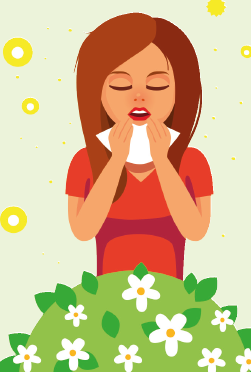ALLERGIES 2
More people have allergies today compared to decades ago. Allergies are negative bodily reactions to things around you or items that you eat.
In 2016, 17.6 million adults were diagnosed with hay fever. That was the finding of one survey by the WHO (World Health Organization). Allergens are substances that set off allergies. Many allergens—such as dust and mould—are found in the air.
Allergens in the air aren’t the only problem. Kids’ food allergies have risen too. Between 1997 and 2007, the number of kids with food allergies jumped by 18%. Eating milk products and eggs can give some children rashes. Those foods can even cause some people to have trouble breathing.
What’s behind the spread of allergies? Some scientists think our immune systems don’t have enough to do. Immune systems help our bodies fight germs. But kids today come in contact with fewer germs than their grandparents did. That’s in part because medicine is more readily available. Experts say that when our immune systems have fewer germs to fight, they can get confused. They attack other things, such as the milk that we drink, instead.
Other scientists say hotter temperatures are to blame. They say the weather is warmer for longer periods now, so plants bloom longer. Plants release pollen, which is a common allergen.
Doctors do not know for sure what’s making allergies increase. But luckily, they know how to treat them with medicine.

